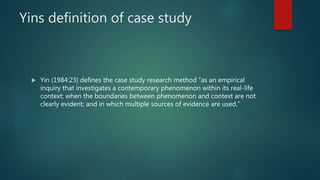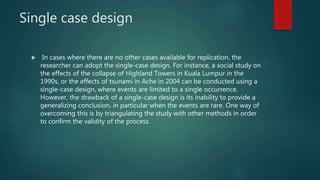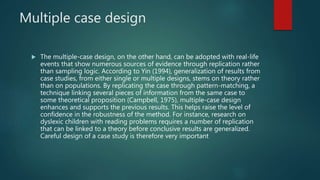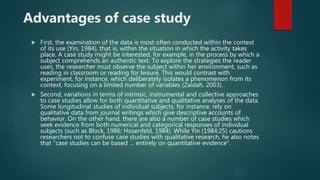This document provides an overview of case study research. It defines a case study as an in-depth analysis of a specific situation or phenomenon. Case studies allow for an exploration of complex issues through reports of past studies. They provide a holistic and in-depth understanding by including both qualitative and quantitative data. The document discusses different types of case study designs, such as single case, multiple case, exploratory, descriptive, and explanatory case studies. It also outlines common characteristics of case study research such as using multiple sources of evidence and studying the case within its real-life context.






























